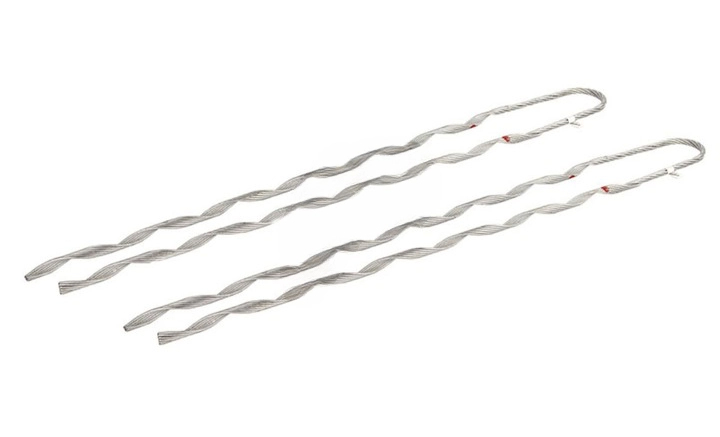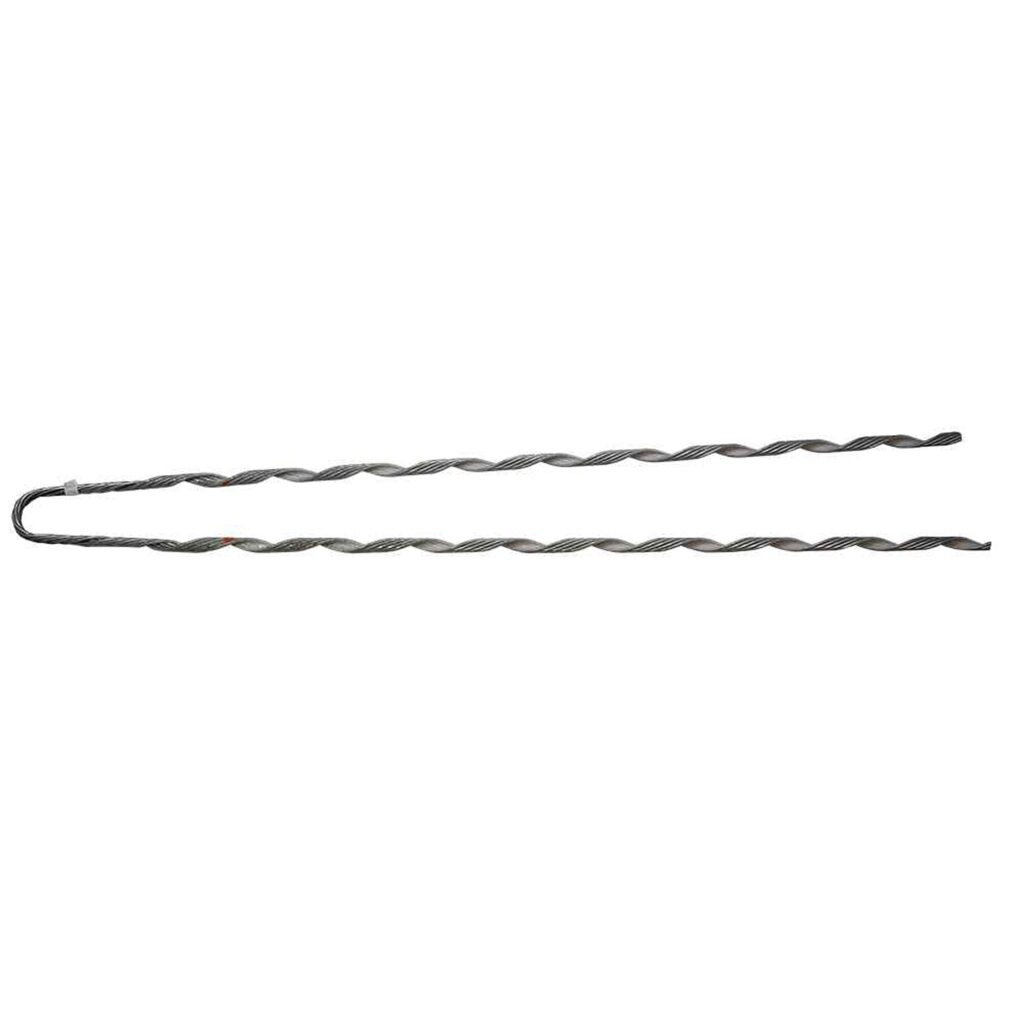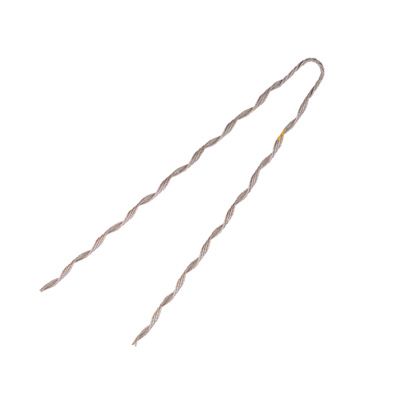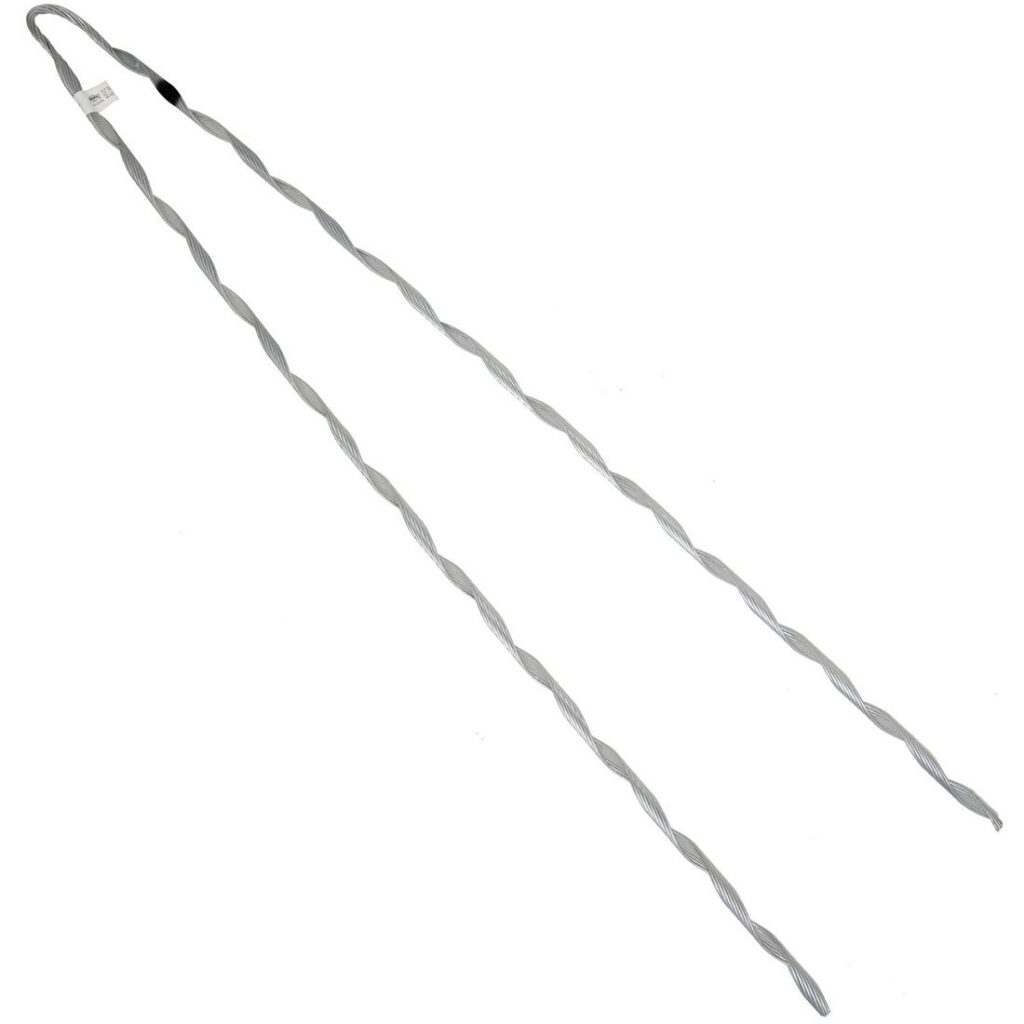A big grip dead end is a specialized device used in telecommunications and transmission lines. It helps to anchor and secure overhead cables. Big grip dead end consists of a large, strong grip designed to hold the cable in place. It also helps to prevent the cables from sagging or becoming loose. A big grip dead end helps to maintain the stability and reliability of overhead cable networks. This helps to ensure the uninterrupted communication and transmission of data or electricity. Big grip dead ends serve to anchor the cables at the termination points of the line in ADSS cables. The big grip provides a strong and reliable hold on the ADSs cables even under different conditions. They are also used to anchor the OPGW cables to support structures. Proper anchoring of these cables helps maintaining uninterrupted transmission of data and power.
Performance characteristics of a big grip dead end
The big grip dead end has various characteristics that show their best performance. They contribute to the stability, reliability and safety of cable installations. The following are the big grip dead end performance characteristics.

- Strength and load capacity – the big grip dead ends have designs to withstand high tensile loads and mechanical stresses. They should be able to anchor overhead cables under various conditions. This is including high winds, ice accumulation or dynamic loads.
- Secure grip – the grip mechanism of the dead end should provide a tight and secure hold on the cable. This helps to distribute the load along the length of the cable. This is to prevent localized stress concentrations.
- Simple installations – the dead end should also be easy to install and adjust. This is to ensure efficient installation processes and allow for adjustments to tension.
- Resistance to environmental factors – the dead ends should be resistant to environmental factors. This is including UV exposure, temperature fluctuations, moisture and chemical exposure.
- Durability – they are from materials that are resistant to corrosion and degradation. These materials include galvanized steel or aluminum.
- Versatility – big grip dead ends should have different designs to suit different cable sizes and types. This allows for flexibility in installation and compatibility with various cable systems.
- Compliance with standards – the design and performance of big grip dead ends should meet relevant industry standards. This is to ensure compatibility with existing infrastructure and adherence to safety needs.
Materials used in the construction of big grip dead end
The choice of big grip dead end material depends on factors. This is including specific application, environmental conditions, performance characteristics needed and cost considerations. Additionally, selecting the right materials help to ensure they meet the necessary strength, durability and reliability. The following are the common materials for big grip dead end.

- Steel – high-strength steel serves in the construction of big grip dead ends. This is because of its mechanical properties and durability. Dead ends from steel are able to withstand heavy loads and are corrosion resistant.
- Aluminum – this material is lightweight but has strong characteristics. They also provide good corrosion resistance. Aluminum big grip dead ends serve in applications where weight reduction is a priority.
- Composite materials – these include materials such as fiberglass-reinforced polymers. They offer strength-to-weight ratios, corrosion resistance and electrical insulation properties.
- Aluminum alloy – some of the big grip dead ends are from aluminum alloys that provide strength and lightweight properties. They offer a balance of strength, corrosion resistance and weight saving.
- Bronze – bronze dead ends work in applications that need corrosion resistance and mechanical properties. They serve in marine environments with exposure to saltwater.
Technical specifications for big grip dead ends
Technical specifications help to provide valuable information about the big grip dead ends. The specifications vary depending on several factors. This is including specific application, cable type, load requirements and manufacture preferences. Also, it is advisable to consult the manufacturer’s specifications for specific product details. The following are the technical specifications related to big grip dead ends.
| MPN: | BG-2112 |
| Cable Diameter | 3/4″ |
| Type | Big-Grips |
| Color | Orange |
| Breaking Strength (lbs) | 58,300 |
| Overall Length | 76″ |
| Box Quantity | 5 |
| Approx. Weight (lbs) | 11.2 |
- Size and compatibility – big grip dead ends are available in various sizes to hold different cable diameters and types. The specifications should include the compatible cable sizes and types for proper fit and grip.
- Load capacity – they should have designs to withstand specific loads or tensions applied to the cable. The specifications should state the greatest allowable tensile load that dead ends can support without failure.
- Mechanical properties – specifications should include details about the mechanical properties of the dead ends. This is including tensile strength, yield strength and elongation.
- Compliance – big grip dead ends should follow relevant industry standards and regulations. This is including standards set by ANSI, IEC or ISO.
- Material – the specifications should specify the material used in the construction of the dead ends. It should also include details about coatings or treatments for corrosion resistance.
- Grip length – this refers to the part of the dead end that clamps onto the cable. Technical specifications should include the grip length. This is to ensure proper engagement with the cable.
- Corrosion resistance – the specifications may include the level of corrosion resistance provided. The specifications may include details about coatings, surface treatments or material composition.
Industry advancements and updates for dead ends
There is continuous development for big grip dead ends focuses on their performance, durability and ease of installation. These advancements can continue to enhance the reliability and efficiency of their infrastructure. This is while adapting to evolving technological and regulatory requirements. The following are the potential advancements and updates for big grip dead ends.

- Improved materials – manufacturers may develop new alloys or composite materials. This is due to their superior strength-to-weight ratio.
- Smart technologies – integration of smart technologies could enable real-time monitoring of cable tension. These technologies include sensors and monitoring systems. The data could ease maintenance and early detection of potential issues.
- Integration with automation and robotics – advancements in automation and robotics could streamline manufacturing processes. This could enhance quality control for big grip dead ends.
- Research and development – research and development efforts may explore new approaches to improving performance and reliability. Collaboration between industry stakeholders, academic institutions and research organizations could help identify emerging challenges.
- Enhanced grip designs – progress in grip designs may optimize the distribution of loads along the cable. This could help reduce stress concentrations and potential damage. it could also improve performance and reliability of big grip dead ends.
- Modular and adjustable designs – modular designs may allow for easier installation and adjustment of big grip dead ends. The flexibility could streamline installation processes and accommodate various cable sizes.
- Standardization and interoperability – industry organization may work to establish standardized specifications needs. This could help promote compatibility between products from different manufacturers.
Big grip dead ends for ADSS and OPGW cables
Big grip dead ends play a crucial role in anchoring the cables to support structures such as poles. The dead ends have designs to accommodate the characteristics and requirements of ADSS and OPGW cables. They help to ensure the stability, reliability and longevity of overhead cable networks. Additionally, it is advisable to consult with industry experts for guidance on the best dead ends to use in ADSS/OPGW cables. The following are the considerations for big grip dead ends used with ADSs and OPGW cables.

- Compatibility – big grip dead ends must be compatible with the specific diameters and construction of ADSs and OPGW cables. They should be able to provide a secure grip without damaging the cable’s optical fibers.
- Corrosion resistance – ADSS and OPGW cables should be from materials with high corrosion resistance. This is to ensure long term reliability and performance.
- Insulation – dead ends for OPGW cables should provide electrical insulation to prevent interference with the optical signal transmission.
- Load capacity – dead ends for ADSS and OPGW cables should have ratings for withstanding the expected loads and tensions.
- Grip design – the grip mechanism should be able to distribute the clamping force along the length of the cable. This is to reduce stress concentrations and potential damage on the cables.
- Ease of installation – big grip dead ends should have designs that allow easy installation and adjustment. This allows for efficient deployment and maintenance of ADSS and OPGW cable systems.
Frequently asked questions
Dead ends for ADSS and OPGW cables may have different designs and specifications for different characteristics. Dead ends for OPGW cables need to provide electrical insulation while for ADSS cables provide mechanical strength and grip.
Performance characteristics include strength, load capacity, durability, secure grip, versatility, ease of installation and resistance to environmental factors.

